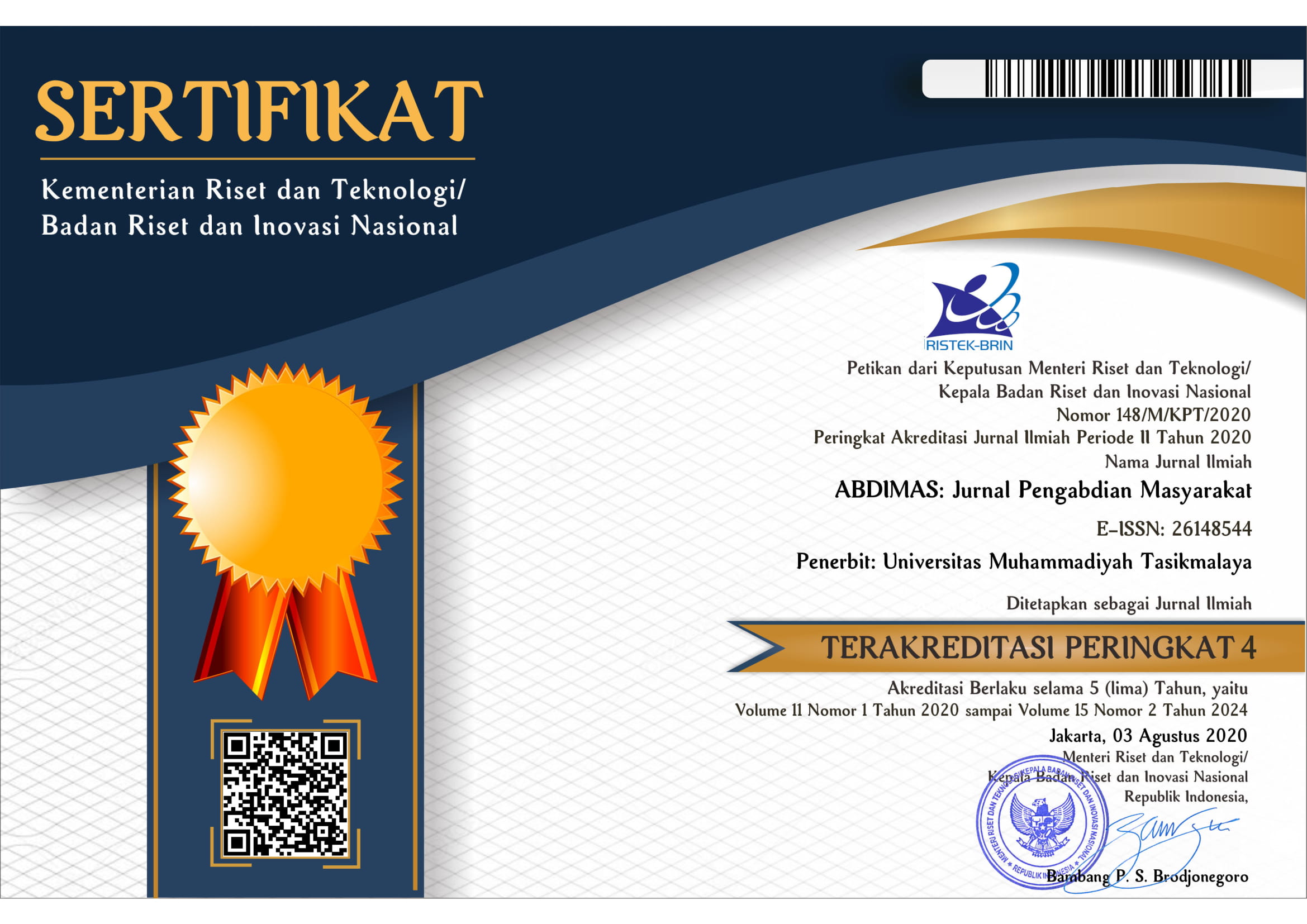Reducing Stunting Rates through Complementary Foods in Madukoro Village, Kajoran District, Magelang Regency
DOI:
https://doi.org/10.35568/abdimas.v6i1.3009Keywords:
Community Service, Stunting, Complementary FoodsAbstract
Stunting is a chronic condition caused by long-term malnutrition. Stunting is based on the index of body length for age (PB/U) or height for age (TB/U) with a calculation limit (z-score) less than -2 SD. This community service aimed to provide information to the public about stunting, its impact, how to handle, and how to make complementary foods. The method used was survey, permission from partner, problem discussion, and problem solving by providing counselling and preparing complementary foods. The results indicated that people with insufficient understanding of stunting information were finally more aware of stunting, prevention methods, causes of stunting, and the impact of stunting on infants. By providing information about complementary foods, selecting nutritious foods, and environmental hygiene sanitation, stunting rates can be reduced in Madukoro Village.
Downloads
References
Alfarisi, R., Nurmalasari, Y., Nabilla, S., Dokter, P. P., Kedokteran, F., Malahayati, U., …
Malahayati, U. (2019). STATUS GIZI IBU HAMIL DAPAT MENYEBABKAN. 5(3), 271–278.
Apriluana, G. (2018). Analisis Faktor-Faktor Risiko terhadap Kejadian Stunting pada Balita ( 0-59
Bulan ) di Negara Berkembang dan Asia Tenggara. 247–256.
Bappenas. (2018). Rencana Aksi Nasional Dalam Rangka Penurunan Stunting. Rembuk
Stunting: Jakarta
Beal, T., Tumilowicz, A., Sutrisna, A., Izwardy, D., Lynnette, M.N. (2018). A review of child
stunting determinants in Indonesia. Wiley Maternal & Child Nutrition. 14:e12617, page 1 – 10
Bella, F. D., & Fajar, N. A. (2019). Jurnal Gizi Indonesia Hubungan pola asuh dengan kejadian
stunting balita dari keluarga miskin di Kota Palembang. 8(1), 31–39.
Bukusuba, J., Kaaya, N.A., Atukwase, A. (2017). Predictor of Stunting in Children Aged 6 to 59
Months: A Case Control Study in Southwest Uganda. Food and Nutrition Bulletin. 38(4), page
– 553
Kemenkes. (2018). Situasi Balita Pendek (Stunting) di Indonesia. Jakarta Selatan: Kemenkes RI
Pusat Data dan Informasi
Kesehatan, D., Kebidanan, J., & Vol, K. (2020). “stunting”, “related factor”, “children”, “factor
determinant”,. 11(1). https://doi.org/10.33859/dksm.v11i1.559
Masereka, E. M., Kiconco, A., Katsomyo, E., Munguiko, C. (2020). The Prevalence and
Determinants of Stunting among Children 6 – 59 Months of Age in One of the Sub-Countries
in the Rwenzori Sub-Region Western Uganda, Open Journal of Nursing, 10, page: 239 – 251
Maywita, E. (2015). Faktor Risiko Penyebab Terjadinya Stunting pada Balita Umur 12-59 bulan di
Kelurahan Kampung Baru Kec. Lubuk Begalung Tahun 2015. Jurnal Keperawatan, 3(1), 56–
https://doi.org/https://doi.org/10.34008/jurhesti.v3i1.24
Sampe, S. A., Toban, R. C., & Madi, M. A. (2020). Hubungan Pemberian ASI Eksklusif Dengan
Kejadian Stunting Pada Balita Pendahuluan. 11(1), 448–455.












